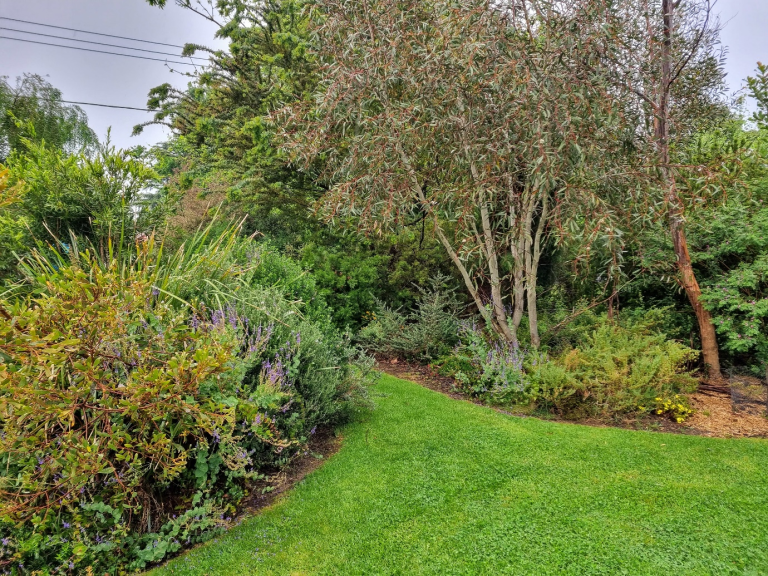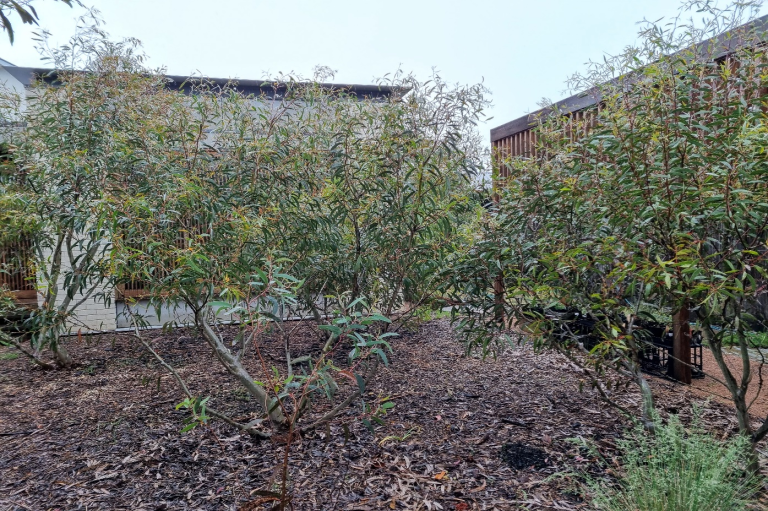This was the first Region Get Together since the COVID Lockdowns and everyone seemed very happy to be seeing each other again.
The weekend began as usual with the President’s dinner and workshop which was held at the Imperial Hotel in Bowral for Presidents and Secretaries of NSW Groups. The topic for discussion was Workplace Health and Safety. A survey of the Groups earlier this year revealed a fairly patchy management of Health and Safety issues which resulted in a downgrade in the Region’s Insurance cover. Expect to see stricter procedures for through district groups during the next year.
Saturday morning saw us assemble at the Exeter Community Hall in bright sunshine. This is a charming venue with a wide veranda to enjoy the morning tea and lunch provided by the local CWA.
Dan Clarke, NSW Region’s Conservation Officer gave us a presentation on the Vegetation of the Wingecarribee Area. This was based on a vegetation Mapping Survey which he carried out initially in 2015 for the NSW Government. The Co-Ordinator of the project was Steve Douglas who will be known to some members when he was a member of Parramatta and Hills.
The area has a wide variety of geology and a very high rainfall. This means that the there is also a wide variety of vegetation types. The following are represented in the area:
- Dry sclerophyll woodlands
- Wet moist sclerophyll forest
- Swampy woodlands
- Headlands and scrublands
- Swamps
- Gully Rainforest and Higher rainforest
- Grasslands comprising native grasses
The survey was conducted on 20 square metre plots in all the vegetation areas. The rugged terrain made this a challenging task in many areas. In some areas there were as many as 80-90 species in one plot indicating an amazing biodiversity. Many of the plots were located on private land but in most cases the owners were interested in the survey results and happy to retain the native bushland.
Dan has continued to work in the Wingecarribee area on further projects resulting from the initial survey work and so was a mine of information on the district.
After lunch we drove to nearby Moss Vale to visit the garden of Tanya Excel. This is located in the former Anglican Rectory on a 5 hectare site. There are 26 neighbours. The garden has some remnant local Eucalypts, which we had learnt about in the morning session – Eucalyptus elata, macarthurii, camfieldii and radiata. Parts of the garden have the usual Southern Highlands cool climate European plantings but most of the site was mown grass. The Anglican clergy were not keen gardeners apparently. Tanya engaged the services of a local nurseryman to plan an area of local species which were planted to provide habitat for local birdlife. Although the plantings are still quite small the number of bird species in the garden has already increased.
This remnant Eucalypt is estimated to be over 400 years old
A lovely bushwalk
The rest of the afternoon was spent on a choice of three bushwalks in Morton National Park at Bundanoon. I chose to go on the Lovers Walk and was surprised to find that there was no leader and that we were expected to go off alone. However, there were many others on the walk and we had a very enjoyable time admiring the diverse array of wildflowers which have grown up since the 2020 bushfires and attempting to identify them.
When the initially flat and sandy path started to plunge down over a steep rocky slope many walkers decided to return. However, three of us continued on and eventually the path levelled out between sandstone pagodas and more interesting flora.
When we arrived at the fire trail which would lead us back to the car park there was a stunning view over the deep river valley below. Suddenly a rainstorm swept into the valley and in no time it was upon us. The kilometre or so walk back to the cars was a rather miserable affair with water deluging from the heavens above and swirling down the firetrail over our feet. Fortunately, it was only a short drive back to our accommodation in Bundanoon.
Dinner on the Saturday evening was in a private room at the Mittagong RSL. This was a very convivial affair with the opportunity to meet more of the local members. The speaker was Jane Lemann who is one of Bowral’s local heroes. For 25 years she has led a bush regeneration project to remove the weeds and restore the native vegetation on Mt Gibraltar. For 100 years there were quarries on The Gib removing and dressing the unique igneous stone found there which although geologically known as microsenite was marketed as Bowral Trachyte. There is only one other location in the world where it is found and that is in Russia. If you know Sydney you have seen Bowral trachyte. It is very common in buildings built in the late 19th and early 20th centuries. It is even in the kerb and gutter stones. Weeds took over The Gib quarries when they closed in 1986. It is testament to Jane’s dedication and ability to inspire others that today The Gib bushland is now restored to its former glory.
On Sunday we were meant to go for a walk through the old quarries but despite the weather forecast the rain returned and it was cancelled. The plant sale and the two garden visits went ahead for the brave souls with umbrellas. The two gardens were within walking distance of each other. It definitely goes against the prevailing fashion to have a native garden in Anglophile Bowral. The two gardens both made bold statements to the street with gardens which included plantings on the nature strip. In both cases the neighbours had extended the street gardens to their properties which was a nice compliment.


There was a wide range of plants propagated by members for sale. The rain certainly didn’t deter buyers here. I was delighted to pick up a small murnong (native yam) plant amongst other goodies.
The Region Get Togethers are a wonderful activity to attend. There is so much to enjoy on so many levels. There are the formal information sessions, the opportunity to see how local gardeners tackle their particular growing conditions, the bushwalks in new locations and the chance to meet fellow plant enthusiasts. It is a lot of work for the host Group but hopefully the Southern Highlanders found the weekend as rewarding as the visitors did.
